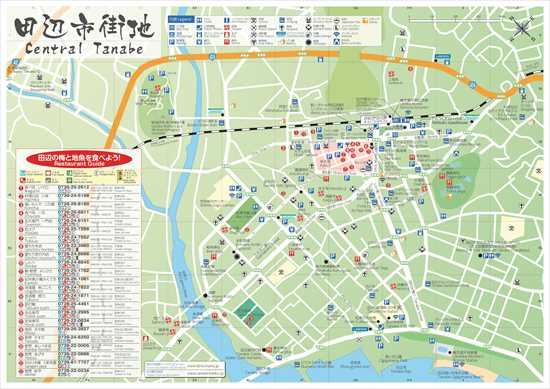Kumano Kodo Gateway
Tanabe City is the historic and present-day gateway to Kumano, a key location for both land and ocean transportation routes. It is a sleepy coastal city with a population of around 65,000, the largest in the south of the Kii Peninsula.
Tanabe Bay is to the west with mountains rising in the east. Across the bay to the south is the Shirahama resort area.
Fishing and agriculture-focused on ume and orange production are the major industries. The mountains inland from the coast are covered with terraced orchards.
Kii-Tanabe Station Area
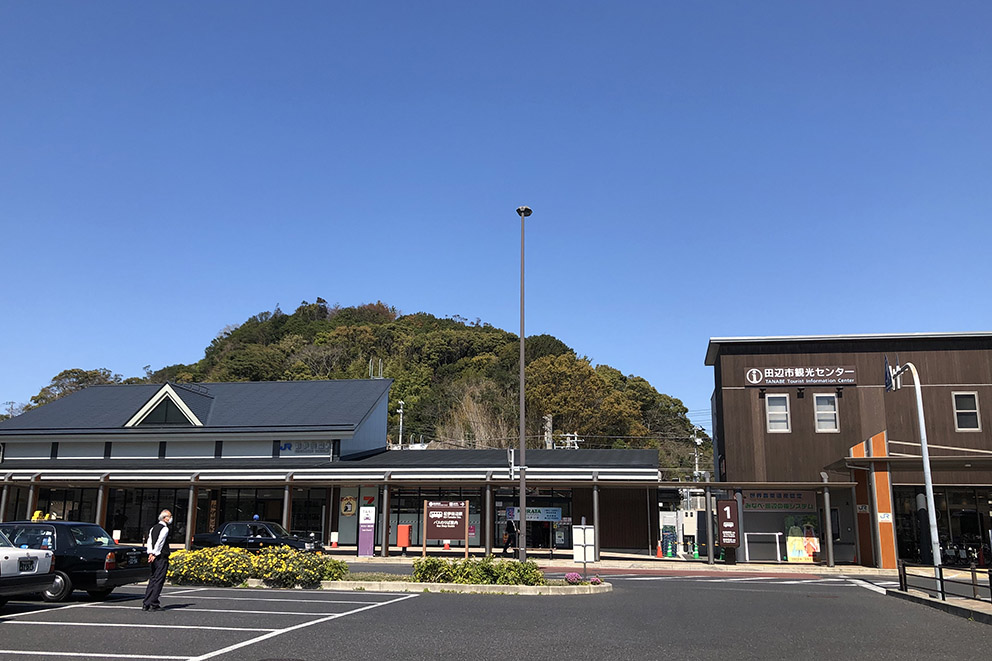
The station area is the center of the older part of the city. Next to the Kii-Tanabe station is the TANABE Tourist Information Center.
Most of the other main sites are the south-west of the station. Busses for the Kumano Kodo leave from Bus Stop No. 2 in front of the station.
Travel Support Center
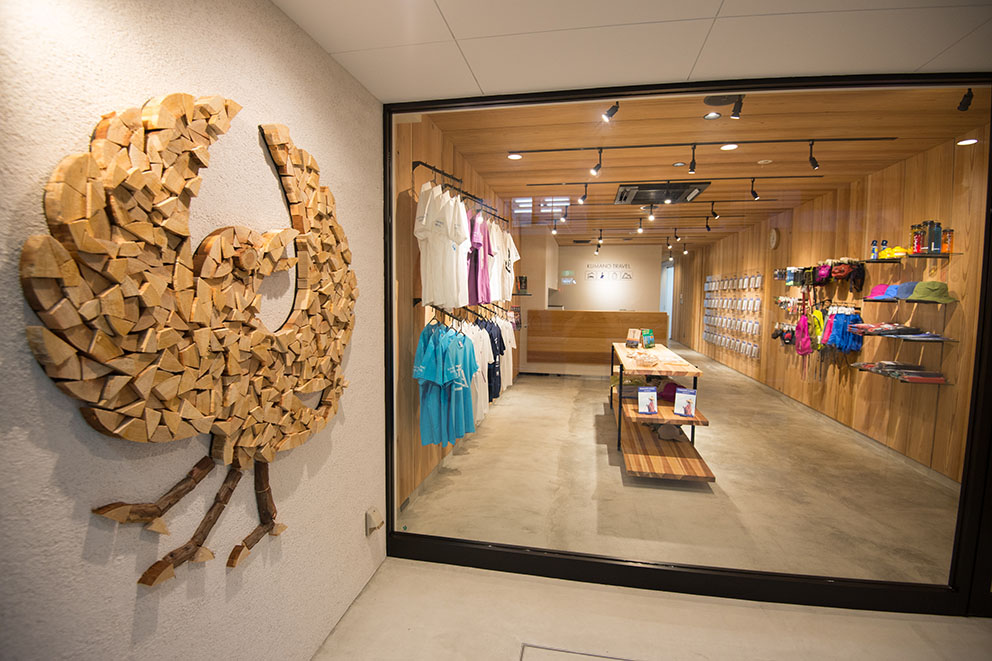
The KUMANO TRAVEL Travel Support Center is dedicated to helping visitors onsite. It is located within short walking distance from the Kii-Tanabe station and is run by bilingual English/Japanese speaking staff. Services include luggage storage, luggage shuttle, accommodation reservations, etc. Outdoor gear and local souvenirs are for sale.
Tokei-jinja
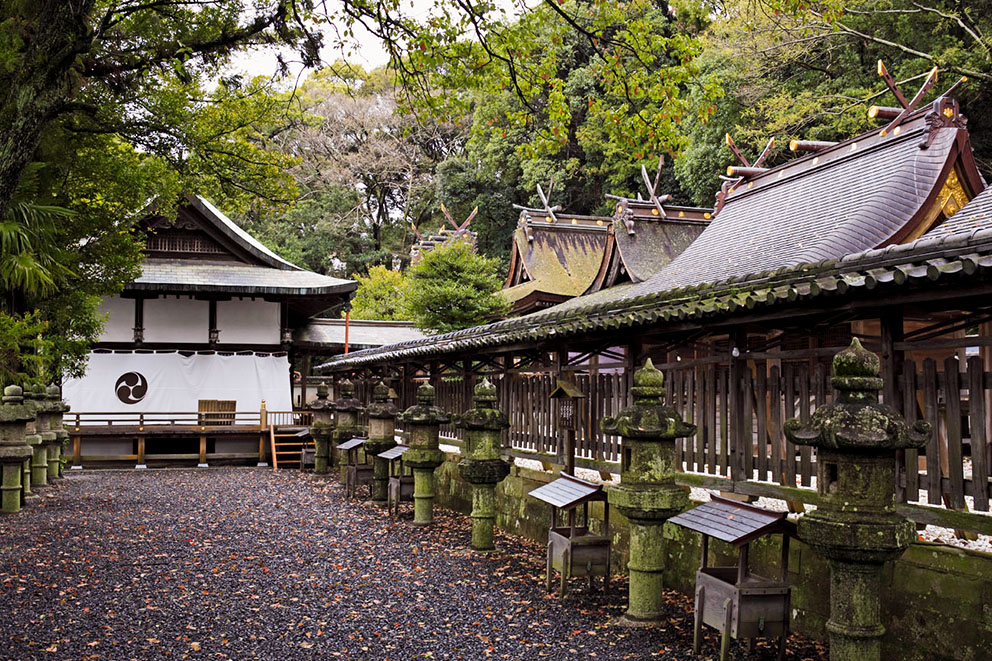
Tokei-jinja Shrine was established in 419 AD and derives from Kumano Hongu Taisha. Many imperial and aristocratic pilgrims paid homage here praying for safe passage into the realm of Kumano.
Because the Kumano deities were manifested in Tokei-jinja Shrine, some pilgrims did not make the voyage into the heart of Kumano, but prayed here, subsequently worshiping the Kumano Sanzan from afar.
The Tokei-jinja festival is held mid-July annually with traditional floats and ceremonies.
Benkei
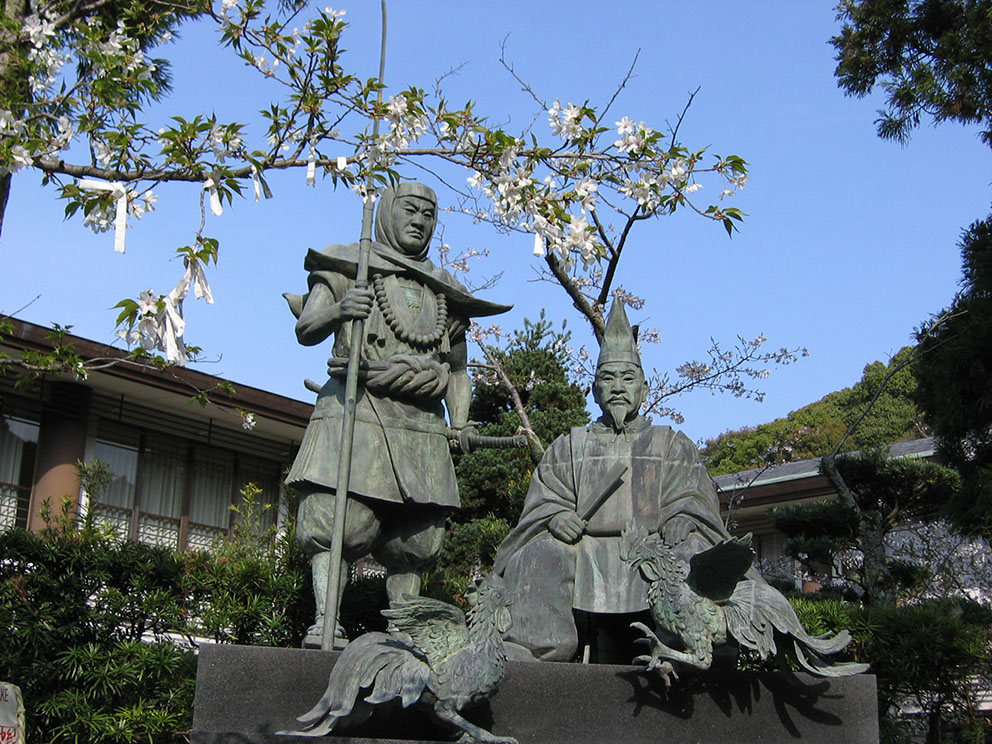
Birthplace of Legendary Warrior Benkei
Musashibo Benkei was a legendary warrior monk said to be born in Tanabe.
He was known for his great strength and loyalty and is a popular figure in Japanese history. There are many stories about him in traditional Japanese kabuki theater. However, it is uncertain whether or not he was an actual person. In fact, there are so many stories that it is hard to know what is truth and what is legend. The most famous story about him is that he died standing up, pierced with arrows, defending his master.
According to the “Gikeiki” 義経記, a story about Minamoto Yoshitsune, a powerful general of the Minamoto feudal clan, and his followers, Benkei was supposedly born in Tanabe. He lived in the 12th century. In the Gikeiki, he was the son of Tanzo, a head of the Kumano Betto Family, and he was called “Oniwaka” in his childhood.
At that time, Buddhist temples were important centers of administration and culture and even had their own armies. When he was banished from Hieizan, a Buddhist enclave near Kyoto, he named himself “Saito Musashibo Benkei” after the buildings in Hieizan. He became a warrior monk and moved around the country. Once he blocked the Gojo Bridge in Kyoto and fought everyone who passed, eventually collecting 999 swords! He was defeated trying to get his 1,000th. The person that beat him was Minamoto Yoshitsune, a famed, but ill-fated lord. Benkei immediately became his loyal follower.
There are many historical places related to Benkei in Tanabe. For example, there is the 6th Benkei pine tree, which was planted to celebrate his birth, just in front of the City Hall. Recently, a monument for the first Benkei pine tree was built at the Katamachi Benkei pine tree site where the first tree had originally been planted.
There is “Ubuyu-no-Kama” in Tokei-jinja shrine. “Ubuyu” means the first water used to wash babies when they were born. “Kama” means “pot,” so “Ubuyu no Kama” means the pot used to boil that water. At Yasaka-jinja shrine, there is a stone with a curious indentation. It is said that Benkei made that mark when he sat down on the stone, and it is the shape of Benkei’s backside. At JR Kii-Tanabe Station square, Benkei’s imposing statue stands as a symbol of Tanabe City.
Every 3rd Sunday of the month from 8:30 to 11:30, “Benkei Ichi” (Benkei Market) is held at the Kappa-ku Public Space in front of the amphitheater by the beach (or under the covered space of the Tanabe Municipal Budokan building nearby if it rains). About 40 booths are there and feature local produce, novelties as well as daily necessities at reasonable prices.
Ajikoji
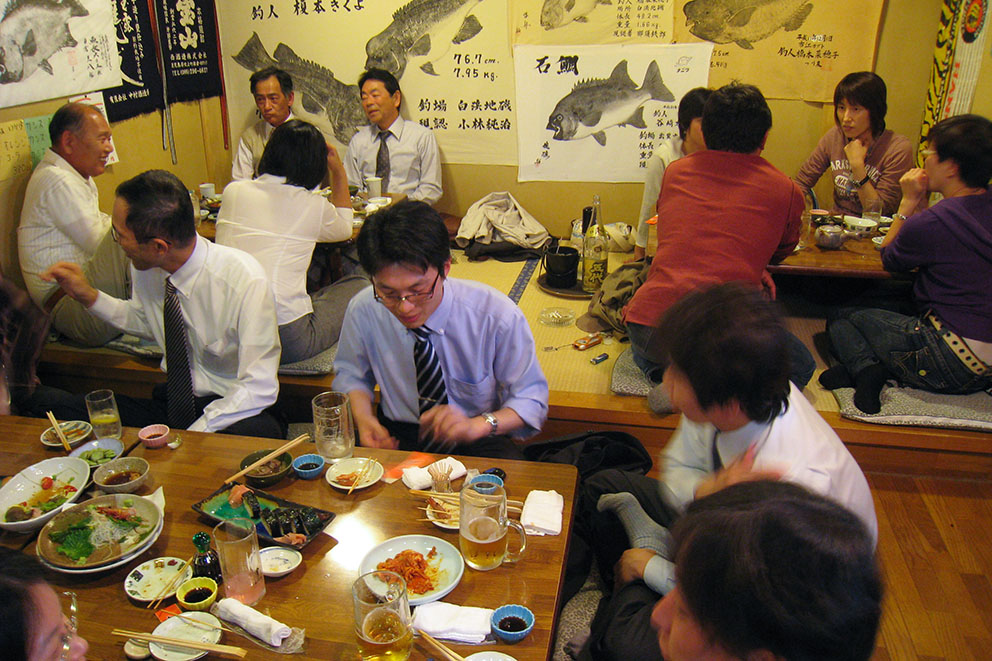
The compact entertainment area in front of the JR Kii-Tanabe station is called “Ajikoji” and is packed with over 200 restaurants and Japanese style pubs (izakaya). Every alley is full of quaint places to eat and drink.
Tanabe is a safe place for non-Japanese speakers to fully experience delicious local cuisine in an authentic environment. Kanpai!
Aikido Mecca
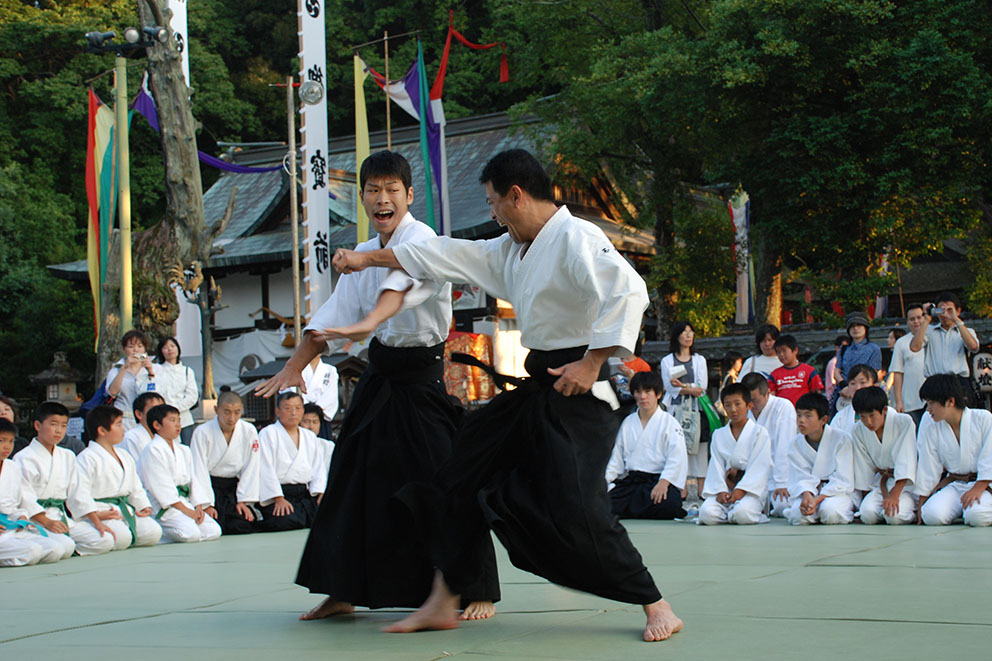
Tanabe City is the hometown of Ueshiba Morihei, the founder of the Aikido martial art. For those who practice Aikido a visit to Tanabe is a must-do. There are many sites associated with this legendary teacher including his gravesite and a bronze statue.
Cape Tenjinzaki
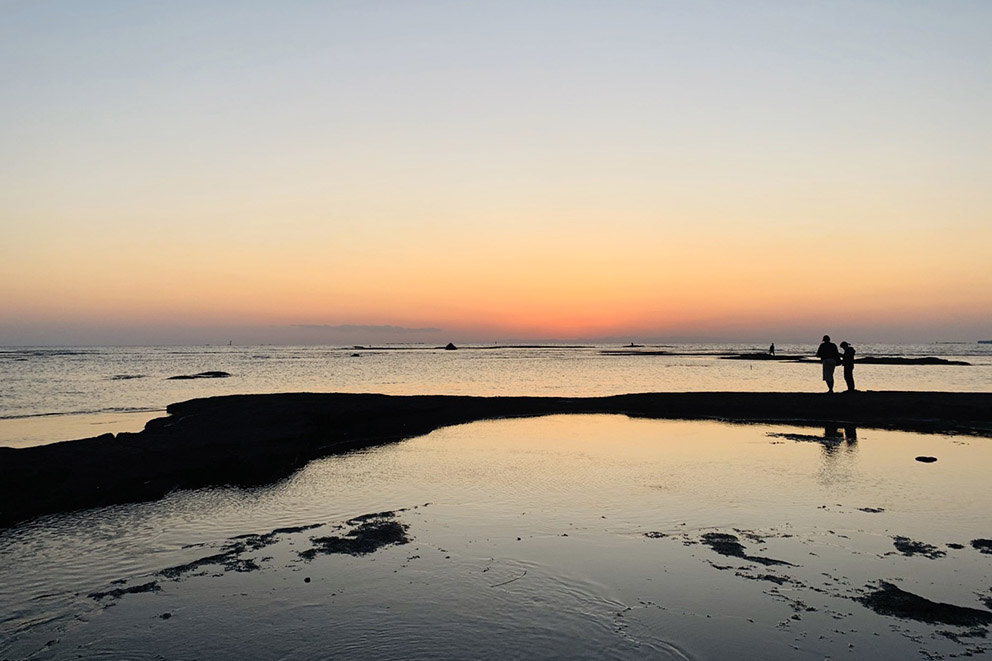
Preserving the Rich Green and Sea
Tenjinzaki is a point on the north side of the Tanabe Bay, across the bay from the Shirahama Hot Springs. The green, thick natural seaside forests on the hillside thrive despite the strong coastal winds. The sea directly links with the Pacific Ocean, and when the tide is low, a flat, rocky terrain of some 13 ha is seen along the beach.
Tanabe Bay is one of the most valuable natural environments in the world for its abundance and variety of sea life. Under the influence of the warm Kuroshio Current, and with many reefs that slow the movement of the currents, the Bay nurtures the growth of many species of larvae born in the southern seas.
The Tanabe Bay opens up to the west. In the wintertime, therefore, the seasonal northwest winds force the Kuroshio Current into the bay, helping to prevent to lowering of the water temperature.
An important point is the outstanding stability of its overall environment. Behind the bay are the seaside forests and their humus soil continues to supply nutrients to the water. The forests also serve to prevent mud and sand from flowing into the water by rain and wind.
The most wonderful and distinctive feature about the nature in Tenjinzaki is the formation of a single, rich ecosystem encompassing forests, shore, and sea, in spite of its vicinity to an urban area. Here, plants and animals in the seaside forests and those in the sea, with inter-tidal ones on the reefs, thrive together in their respective territories.
In 1974, when we, citizen volunteers, learned of a plan for an exclusive vacation home development on Tenjinzaki , we petitioned Tanabe city and the Wakayama prefectural governments to use their power to restrain the development.
The natural environment can hardly be restored once it is destroyed. When we realized that the solution through the governments would be difficult, we decided to buy up the land as our last resort and set out on the Tenjinzaki movement.
With our hope to leave this natural environment to future generations, we established the Foundation.
Caring for Tenjinzaki Foundation
The name of our Foundation uses the words “care for” rather than “project”. Our idea is that “project” implies the presence of enemies and there should be no enemies against this movement. We wish everyone to understand our movement, to cooperate and care for nature in Tenjinzaki. Our Foundation was designated as the very first Natural Environment Conservation Corporation in Japan.
Tanabe City, Wakayama Prefecture
Adapted text from the Guide to National Trusts in Japan.
Links
JAPANESE
Caring for Tenjinzaki
Tanabe Accommodation
As the Gateway to Kumano, Tanabe City is a great place from which to embark on the Kumano Kodo pilgrimage. Arrive at this rural community, pray for a safe journey at Tokei-jinja Shrine, purify yourself at the Shiogori site at Ogigahama Beach, enjoy a local meal at an izakaya restaurant, and get a good night’s rest for the trail.
Tanabe Access
Tanabe City is accessible by JR train and bus, and within relative distance of Kansai International and Nanki-Shirahama airports.

